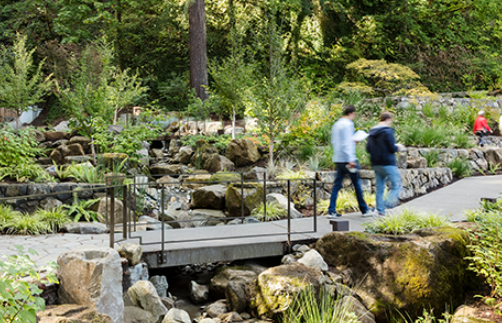Exploring the World of Landscape Architecture
Landscape architecture is more than just designing beautiful gardens; it’s about creating environments that enhance human well-being and connect us to nature. As our cities grow and change, the role of landscape architects becomes more critical in ensuring that outdoor spaces are not only aesthetically pleasing but also functional and sustainable. Whether you are a homeowner looking to enhance your yard or a city planner reimagining public spaces, understanding landscape architecture can be incredibly beneficial.
The Importance of Sustainable Practices in Landscape Architecture
In an age where environmental concerns are at the forefront, sustainable landscape design is essential. Landscape architects are increasingly integrating green practices into their projects. This includes using native plants that require less water and maintenance, employing rain gardens to manage stormwater runoff, and creating habitats that support local wildlife. Sustainable practices not only reduce ecological footprints but also create enjoyable outdoor spaces that enhance community life. By prioritizing sustainability, landscape architects help combat climate change while providing beautiful settings for people to enjoy.
Innovative Trends Shaping the Future of Landscapes
The field of landscape architecture is continuously evolving, influenced by new technologies and design philosophies. Urban greening initiatives, for example, are gaining popularity as cities recognize the need for parks and green roofs to combat heat islands and improve air quality. Additionally, advancements such as 3D modeling and virtual reality allow landscape architects to present their ideas more vividly, making it easier for clients to visualize their projects. Embracing these innovations can lead to more engaging and functional landscapes that meet the needs of modern society while still paying homage to nature.
Creating Functional Outdoor Spaces for Communities
A well-designed landscape can significantly enhance community interaction and well-being. Landscape architects consider how people use space by designing parks, plazas, and waterfronts that invite social activities and community gatherings. Elements such as seating, pathways, and public art encourage people to connect with one another and their surroundings. Furthermore, incorporating spaces for recreation, leisure, and education can lead to healthier lifestyles. By blending functionality with beauty, landscape architects play a crucial role in fostering vibrant, inclusive communities.
In conclusion, landscape architecture is vital in shaping our outdoor environments—promoting sustainability, embracing innovation, and enhancing community interactions. Whether you’re interested in transforming your backyard or learning about urban design, exploring this field can lead to a deeper appreciation for the spaces we inhabit. To learn more about landscape architecture and its impact, consider reaching out to local landscape designers or visiting public parks that showcase exemplary designs.

